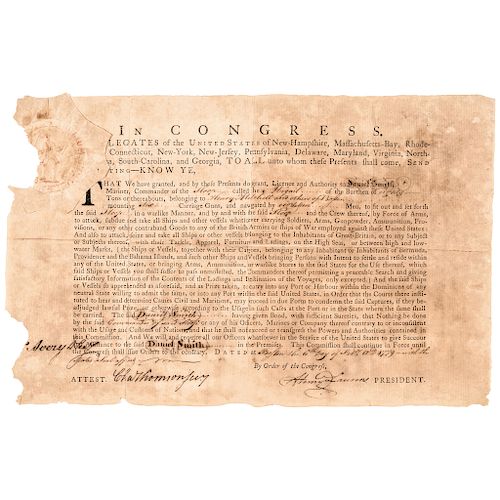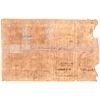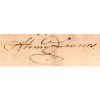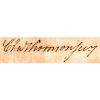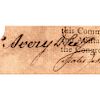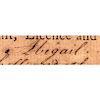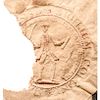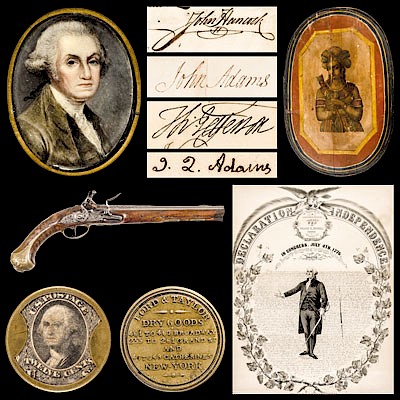1779 President of the Continental Congress HENRY LAURENS Signed Letter of Marque
Lot 49
Estimate:
$2,800 - $3,800
Absentee vs Live bid
Two ways to bid:
- Leave a max absentee bid and the platform will bid on your behalf up to your maximum bid during the live auction.
- Bid live during the auction and your bids will be submitted real-time to the auctioneer.
Bid Increments
| Price | Bid Increment |
|---|---|
| $0 | $10 |
| $200 | $20 |
| $300 | $25 |
| $500 | $50 |
| $1,000 | $100 |
| $2,000 | $200 |
| $3,000 | $250 |
| $5,000 | $500 |
| $10,000 | $1,000 |
| $20,000 | $2,000 |
| $30,000 | $2,500 |
| $50,000 | $5,000 |
| $100,000 | $10,000 |
| $200,000 | $20,000 |
| $300,000 | $25,000 |
| $500,000 | $50,000 |
About Auction
By Early American History Auctions
Jun 1, 2019
Set Reminder
2019-06-01 12:00:00
2019-06-01 12:00:00
America/New_York
Bidsquare
Bidsquare : Historic Autographs, Colonial Currency, Political Americana & Revolutionary War Era
https://www.bidsquare.com/auctions/early-american-history-auctions/historic-autographs-colonial-currency-political-americana-revolutionary-war-era-4152
Historic Autographs, Coins, Currency, Political, Americana, Historic Weaponry and Guns, John Adams, Thomas Jefferson, Early American History Auctions auctions@earlyamerican.com
Historic Autographs, Coins, Currency, Political, Americana, Historic Weaponry and Guns, John Adams, Thomas Jefferson, Early American History Auctions auctions@earlyamerican.com
- Lot Description
Autographs
"Henry Laurens" President of the Continental Congress Signed Letter of Marque
HENRY LAURENS (1724-1792). 2nd President of the Continental Congress (Succeeded John Hancock), Signed the Articles of Confederation and President of the Continental Congress when the Articles were passed on November 15, 1777.
February 6, 1779-Dated Revolutionary War Period, Partly-Printed Document Signed, "Henry Laurens" as President of the Continental Congress, boldly Countersigned "Charles Thomson" as Secretary of the Continental Congress. Boston, Fine. Being a Letter of Marque for Massachusetts Sloop, "Abigail," measuring 12.25" x 8", 1 page, on heavy laid period paper. Large partial Embossed Paper and Wax Massachusetts "Paul Revere" design "Minuteman with his Sword in Hand" vignette at upper left torn on its left side. Irregular left margin and slight chipping at bottom, paper toned with some slight ink errosion on the lower signatures and splitting horizontal centerfold is reinforced on the blanke reverse with a strip of archival tape. This Privateer Sloop was commissioned to have six guns and eighteen men aboard, however, records show only twelve men manned the ship. As was custom with issuing Letters of Marque, the owner of the Privateers was forced to pay a bond to ensure that no laws or regulations would be broken while operating at sea. The owner of Abigail, "Henry Mitchell and others of Boston," were forced to pay both a Continental Congress and State Bond for this issuing. The Continental Bond was $5,000 and the State was 4,000. The letter was bound to members of Congress including Continental Congress President Henry Laurens and acting Treasurer of Massachusetts, Henry Gardener. Extremely rare.
Henry Laurens (1724 - 1792) was an American merchant and rice planter from South Carolina who became a political leader during the Revolutionary War. A Delegate to the Second Continental Congress, Laurens succeeded John Hancock as President of the Congress. He was a signatory to the Articles of Confederation.
Laurens had earned part of his wealth by operating the largest Slave-trading house in North America. In the 1750s alone, his Charleston firm oversaw the sale of more than 8,000 enslaved Africans. He was for a time Vice-President of South Carolina and a diplomat to the Netherlands during the Revolutionary War. On his way to negotiate a treaty with the Dutch in 1780, he was captured by the British and later exchanged for General Cornwallis (1782). He was captured at sea and imprisoned for some time by the British in the Tower of London.
His son John Laurens, persuaded the Continental Congress to allow Slaves to enlist in exchange for freedom and was authorized to recruit a regiment (3000 men). He believed that Americans could not fight for their own freedom while Slaves were held. After John died during the war, the senior Laurens later freed his Slaves, as his son had urged.
Charles Thomson (1729-1824) served as Secretary for the Continental Congress for fifteen years, beginning in 1774. His integrity was legendary among the colonists, and also among the Indians, who called him "man of truth." Thomson was the man chosen to notify General Washington of his election to the presidency.
Henry Laurens was an export merchant in Charleston, South Carolina. He served in the state assembly and as President of the South Carolina Council of Safety (1775). A member of the Continental Congress (1777-79), he served as president from Nov. 1777-Dec. 1778. On his way to negotiate a treaty with the Dutch in 1780, he was captured by the British and later exchanged for General Cornwallis (1782).
Charles Thomson (1729-1824) served as Secretary for the Continental Congress for fifteen years, beginning in 1774. His integrity was legendary among the colonists, and also among the Indians, who called him "man of truth." Thomson was the man chosen to notify General Washington of his election to the Presidency.
- Shipping Info
-
Early American provides in-house worldwide shipping. Please contact us directly if you have questions about your specific shipping requirements.
-
- Buyer's Premium



 EUR
EUR CAD
CAD AUD
AUD GBP
GBP MXN
MXN HKD
HKD CNY
CNY MYR
MYR SEK
SEK SGD
SGD CHF
CHF THB
THB